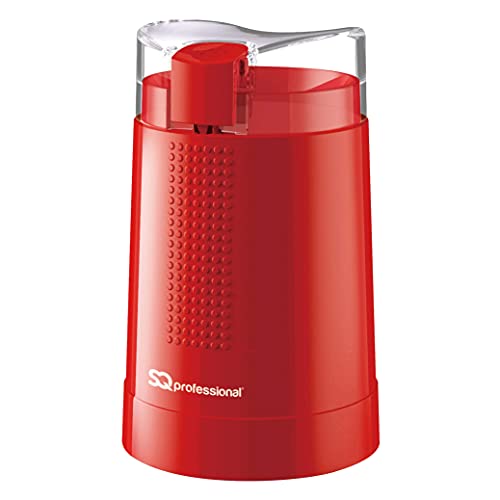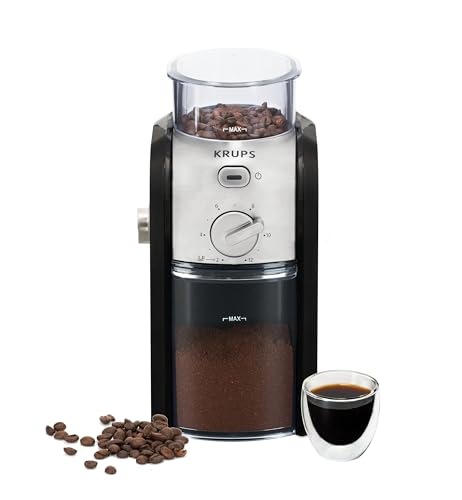Blog entry by Audrea Nicastro
Coffee Beans and coffe grinders
 Freshly
ground beans are the key to a delicious cup of coffee. The proper
grind size for your brewing method will ensure the optimal
extraction of aromas and flavors.
Freshly
ground beans are the key to a delicious cup of coffee. The proper
grind size for your brewing method will ensure the optimal
extraction of aromas and flavors.
The Opus grinder comes with 41 grind settings as well as a volumetric dosing system and a spouted catcher to minimize the mess. It also has a tamper to keep the blades from wearing down too quickly.
Pin that Rolls Pin
The rolling pin has been a staple tool in kitchens across the world for centuries. This versatile tool can be used to prepare various food items including beans. There are many different sizes and designs of rolling pins. Some are made of metal, while others are made from wood. There are models specifically designed to perform specific tasks, like pastry making. Choose a rolling pin that is simple to use and will work in your kitchen. Get a knowledgeable store assistance if you are not sure of the type of model you should purchase.
The roller pin method could be an excellent alternative to grinding beans in a food processor or blender. Although it's more labor-intensive using the roller pin method, it is efficient in getting a medium-fine grind that works well with French press and drip coffee grinder compact coffee grinder (simply click the following internet site). It can be adjusted to create more fine ground, if required.
This method is messy, so cover your work surface with tin or another protection surface. Then, you can lay the beans in one layer on a flat surface, such as a cutting board. Then, roll the beans over with the rolling pin, applying the same pressure to all parts of the beans. Repeat this process until the beans are crushed into a coarse grind.
If you're not comfortable with using a rolling pin alternatively, try hitting the beans instead. This technique can be very noisy, and it may take longer to achieve a coarse grind. However, it is more efficient in chopping the beans into smaller pieces and may be less damaging to your kitchen equipment.
You can also employ a mortar and pestle to grind the beans. This method is more difficult to master but will yield better results. This technique is best suited for those who require perfect grounds for the French press or Chemex coffee. It is important to check the consistency of your ground beans regularly to ensure you're not over-grinding them. This could result in bitter coffee or clog up your coffee machine.
Bag
A coffee bag is a kind of packaging that is used to transport and store whole or ground beans. It is a flexible bag with side gussets that make it easier to grip and seal. It can be made from cotton, paper, or plastic. Some bags are insulated to guard the beans from moisture and also to keep heat in, which improves the flavor. Some bags also come with an degassing valve that allows carbon dioxide to escape while keeping oxygen out.
The right kind of bag can be tricky since each type of bag has its own advantages and disadvantages. Paper bags are lightweight and recyclable. They are an eco-friendly choice. It can absorb odors, moisture and eventually become brittle with time. If you're seeking a more durable bag cotton or jute might be a better choice. These fabrics are also more resistant to tears and stains.
When choosing a bag take into consideration its reputation and recommendations. You can check online reviews or ask local coffee lovers and your coffee beans and grinder shop for suggestions. Ultimately, it's recommended to try different coffees to find the most suitable one to your tastes.
It's not just about the size or shape of the particles that are crushed coffee beans, but also their consistency and shape, too. Different dimensions and shapes of particles influence how water moves through the coffee, which eventually determines the rate of extraction and the flavor. Finely-ground particles can lead to over-extraction and bitter notes, while coarser particles might not extract enough flavor (under extraction).
While some brands suggest grinding beans before making a batch, it's recommended to grind them right before using them. Grinding too early can cause beans to oxidize and change their flavor. Also, it is essential to use a clean grinder when grinding, since coffee oils and residue can build up over time.
You can also use a mortar and pestle for grinding your beans. This classic culinary tool is easy to use and gives you more control than blenders. However, it is essential to take care not to overgrind the beans, as this could damage the seeds and change the flavor of the beans.
Hammer
There are many ways to grind beans hand, even if you don't own a grinder. Certain methods require more precision and perseverance than others, but all can be successful if you employ the right tools and have a little grit. You can grind your beans using an hammer, rolling-pin or even a meat tenderizer. Just be sure to protect your countertops and avoid using too much force since it could cause damage to the beans or crack the hammer or rolling pin.
If you grind your own beans, you can control the texture of the coffee. You can grind your coffee coarsely or finely according to the way you prefer and the way you like to brew it. It is essential to have the right texture of coffee as it will affect how water flows through the grounds, releasing flavors and aromas.
Whole beans contain aromatic compounds and volatile oils that give coffee its distinct flavors and aromas. When you grind coffee beans, these compounds are exposed to air and can be extracted through water during brewing. The size of the grind is important as it determines how water interacts with beans. A finer grind could result in bitterness and excessive extraction and a coarse grind can result in weak coffee.
To begin, measure the amount of coffee you want to grind. Place the coffee beans in a bag that is resealable or between parchment paper. Then lay the bag flat on a firm surface and employ a rolling pin to crush the beans. This process can produce a fine, consistent grind. Be careful not to overdo the pressure, as this could cause damage to your bag and ruin the coffee you drink.
This is a messy process that requires some grit. Place beans in a Ziplock bag between parchment paper to stop them from flying around. Use a hammer to lightly press the bag, rather than hitting it with a Hammer. This will stop you from damaging the counter or hammer. Also, you will be able to achieve a consistent level of consistency.
Paper Filter
Paper filters separate ground coffee from brewed liquid and create a clear, fresh cup of coffee that is free of the dregs. They are disposable and are easy to use with manual brewers. Paper filters are biodegradable, and can be composted, making them an excellent choice for environmentally-conscious households. After brewing they are easy to clean and do not require washing, unlike metal filters. Paper filters must be used correctly. A mistake could result in a cup that has rough texture or a bitter taste due to over-extraction.
Paper filters are absorbing and can soak up the majority of natural oils from coffee beans. This results in the cup being less oily and has a less pleasant taste. It also blocks the flavor and aroma compounds from escaping into the final coffee. Certain oils, like cafestol and kahweol are known to increase cholesterol levels and avoiding them could be beneficial to some people.
Paper filters are made by washing wood pulp and converting it into thin sheets. They are then cut into different shapes, such as half moons that are inserted into the holder of a coffee filter. Some companies, like Melitta make unbleached filters. Bleached paper can leach dioxins into your brewed coffee So choosing a non-bleached filter is an option for people who are conscious about their health.
Filters are available in various sizes to fit various
stainless coffee grinder makers. Some filters have large
holes while others have small ones. The size of the holes
determines what type of grind is best. Larger holes are ideal for
coarser grinds while smaller ones work
best espresso coffee grinder with medium-sized particles. The
size of your filter could also affect the flavor of your coffee.
Some filters transfer foreign flavors, or over-extract the
grounds and block them. A premium filter specifically designed to
reduce this will produce the most delicious coffee.
